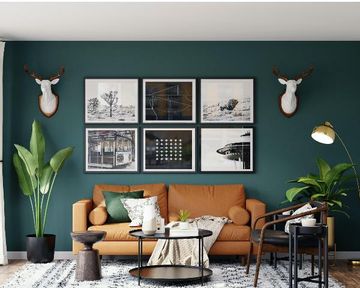The roots of a nation - celebrating the heritage of South Africa
From the hilltop kingdom of Mapungubwe to the vibrant streets of the Bo-Kaap and the natural beauty of the Richtersveld, South Africa is home to some of the most impressive heritage sites in the world.
As we gear up to celebrate Heritage Day on the 24th of September we take a look at some hidden gems and iconic landmarks that you can visit to not only explore our country but also learn more about the history of our country.
Constitution Hill
A living museum of our country’s journey to democracy and the site of a former prison and military fort that bears testament to South Africa’s turbulent past and, today, is home to the country’s Constitutional Court, which endorses the rights of all citizens.
Voortrekker Monument
Construction started in 1937 and was designed to commemorate the Voortrekkers that left the Cape Colony between 1835 and 1854. The sheer scale of the building is something that can only be appreciated up close, measuring 40 meters high, with a base of 40 meters by 40 meters.
Vilakazi Street
No visit to cultural sites of importance would be complete without a day spent on this energetic street. Vilakazi Street is where Nelson Mandela spent the first couple of nights upon his release after 27 years of imprisonment, with his former wife, Winnie Mandela. Number 8115 Orlando West was also where he lived between 1946 and 1962. But Vilakazi Street is home to another Noble Prize winner - Archbishop Emeritus Desmond Tutu who also lived here.
The Mandela House Museum and is open for public tours during the week. But there is more to Vilakazi Street. A block away from here Hector Peterson was killed by police during the students' uprising of June 16, 1976, today celebrated as Youth Day. Now the Hector Peterson Museum and memorial stand on the corner of Moema and Vilakazi Streets.
Dr BW Vilakazi, after whom the street is named, was a poet, novelist and intellectual, who wrote in numerous indigenous languages. He was also the first black man to teach at the University of the Witwatersrand. He later helped develop the written form of both isiZulu and siSwati, and helped put together the isiZulu dictionary.
Baleni Salt Makers
Using 2000 year old techniques the Tsonga people harvest this incredible resource on tribal lands during the dry winter months, which is then sold by individual producers directly to locals and traditional healers who revere its healing properties. Baleni Sacred Salt is also used by Michelin-star chefs for speciality dishes.
Mapungubwe Cultural Landscape
Mapungubwe developed into the largest kingdom in the sub-continent before it was abandoned in the 14th century. What survives are the almost untouched remains of the palace sites and also the entire settlement area dependent upon them, as well as two earlier capital sites, the whole presenting an unrivalled picture of the development of social and political structures over some 400 years. It is an open, expansive savannah landscape at the confluence of the Limpopo and Shashe rivers. It is also a UNESCO World Heritage Site.
iSimangaliso Wetland Park
iSimangaliso Wetland Park, was South Africa’s very first UNESCO World Heritage site when it was declared so in 1999. The third-largest protected area in South Africa is situated in KwaZulu Natal and covers 332000 hectares. It's a place of wonder, miracles, and wildlife. The largest estuarine system in Africa (St Lucia Estuary) 526 bird species and the second-highest vegetated sand dunes are just some of the incredible sightings that await you while in iSimangaliso Wetland Park.
iSimangaliso Wetland Park covers 10 unique destinations namely, Kosi Bay, Coastal Forest, Lake Sibaya, Sodwana, Mkuze Game Reserve, False Bay, Western Shores & Charters Creek, Lake St Lucia, Eastern Shores & Cape Vidal, and Mphelane.
Consisting of 13 separate but contiguous conservation units totalling 239 566 hectares and 85000 hectares of marine reserves. Conservation dates back to 1895 created by the Zululand government.
Iziko Bo-Kaap Museum
Located in one of the earliest homes built in the Bo-Kaap area dating back to the mid-eighteenth century, The Iziko Bo-Kaap Museum (IBKM) is a must-visit to learn more about the unique history of this area.
Situated in the historic area that became home to many Muslims and freed slaves after the abolition of slavery, the museum showcases local Islamic culture and heritage. The house was declared a National Monument in 1965 and restored in the 1970s.
The museum is a social history museum that tells the story of the local community within a national socio-political and cultural context. Originally furnished as a house, it depicted, in a picturesque and stereotypical way, the lifestyle of a nineteenth-century Cape Muslim family.
The Bo-Kaap itself is well worth a visit. Colourful houses, steep cobbled streets, the muezzin’s calls to prayer, and children traditionally dressed for Madrassa, add to this unique Cape experience.
A visit to one of the local eateries in the area will also leave you wanting more - from traditional koesisters to Cape Malay Curry and a Gatsby (or two)
Robben Island
Robben Island needs no introduction. The site of former president Nelson Mandela’s imprisonment is well worth a visit. It is in his small cell where a new nation was dreamed up, a democracy for the people by the people.
From 1961, Robben Island was used by the South African government as a prison for political prisoners and convicted criminals. In 1969 the Moturu Kramat, now a sacred site for Muslim pilgrimage on Robben Island, was built to commemorate Sayed Abdurahman Moturu, the Prince of Madura. Moturu, one of Cape Town's first imams, had been exiled in the mid-1740s to the island. He died there in 1754. Muslim political prisoners would pay homage at the shrine before leaving the island.
With the end of apartheid, the island has become a popular tourist destination. It is managed by Robben Island Museum (RIM); which operates the site as a living museum. In 1999 the island was declared a World Heritage Site for its importance to South Africa's political history and development of a democratic society.

